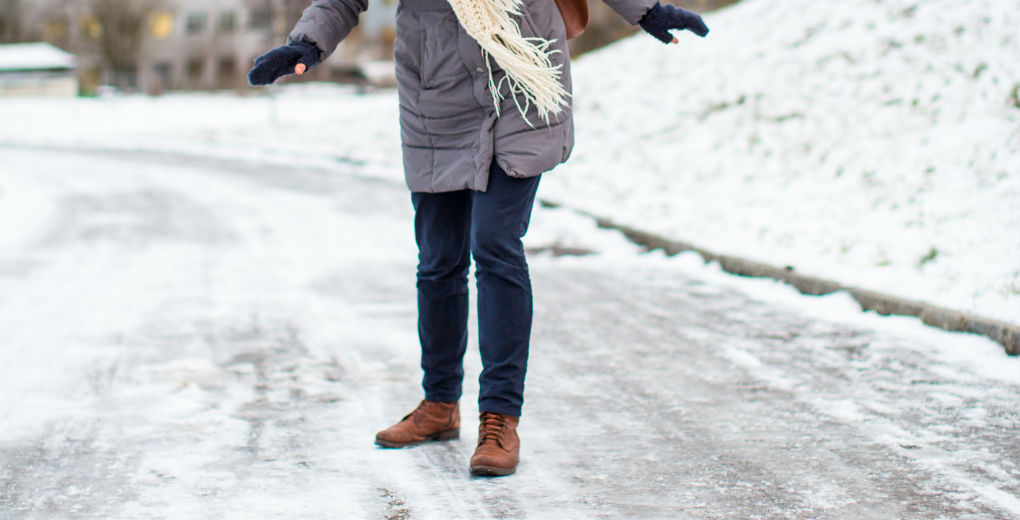Ice skating is a seasonal pastime for many, but to be enjoyable it needs to be on your own terms – not every step you take outside when it’s been snowing or ice has set in. YouTube is littered with “funny” clips and compilations of people falling in cold weather, but these accidents are no laughing matter; such tumbles can cause serious injury and result in lost work, and lost confidence.
So before vowing to not to set foot outside until April, take note of these 8 tips below to help you stand your over-iced ground:
- Don’t rush. If there’s a route you know is more likely to have been cleared or gritted, go for that. Don’t take short cuts and take your time. If you fall over and hurt yourself, you’ll only be more delayed than if you exercised a little caution in the first place
- Think on your feet. If you’re planning on wearing high heels to the office of to an event, switch to them once you’re inside. Flat shoes with rubber soles and grips are best for taking on the ice. Avoid cheaper slipper boots with foam soles – they may be great for insulating your feet but they’re not sold on their ability to keep you upright
- See a handrail? Hold on to it. Contrary to the belief of skater pros in training, that’s what it’s there for
- Baby steps. Taking small steps will allow you to keep your centre of balance underneath you, so you’re less likely to dive forward or flail back
- Rather unfairly, the time of the year where you’re most likely to be lumbered with lots of heavy bags is also the time when you shouldn’t be carrying them in slippery conditions. Be aware that if you are, your balance will be off, so be extra aware – or shop online
- Wear gloves. If you stuff your hands in your pockets in order to keep them warm, you’ll have nothing to help you maintain your balance or break your fall if you do succumb to gravity
- Stick to the sunny side. Take note that if you’re walking down a terraced street that doesn’t get much sun, for example, that the pavements may not have had the chance to melt
- Use your car. No not to drive everywhere, but as support when you’re getting out. Going from sitting to standing on a potentially unsteady surface automatically puts you in a precarious balancing situation, one where you could use all the help you can get by something that’s not going anywhere – assuming you’ve remembered to put your handbrake on.




